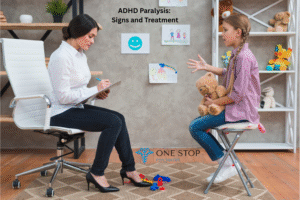Panic disorder is the third most commonly diagnosed anxiety disorder in the US. According to one study, this condition affects over 1 percent of Americans-2 million people and occurs twice as often in women than in men. A combination of psychotherapy and medications are typically used to manage panic disorder.
The Science Behind Panic Attacks
When you understand the science behind panic attacks, it can be easier to see why treatment is so important. Panic attacks are caused by a combination of factors, including genetics, environmental stressors, and brain chemistry.
People who are prone to panic attacks tend to have a genetic predisposition for anxiety. This means that they inherit a tendency to be more anxious than other people. Additionally, people who experience panic attacks often have had exposure to stressful life events, such as trauma or loss.
Brain chemistry also plays a role in panic attacks. People who suffer from panic disorder often have an imbalance of neurotransmitters, chemicals that help relay messages between nerve cells. This imbalance can make the brain more sensitive to stress and more likely to trigger a panic attack.
Treatment for panic disorder is essential because it can help correct the underlying causes of panic attacks. medication can help stabilize brain chemistry and therapy can help address any underlying psychological issues. If you are struggling with panic attacks, please seek professional help.
Know the Symptoms of Panic Disorder
Do you find yourself regularly feeling anxious and on edge? Do you have moments of intense fear or panic that come out of nowhere? If so, you may be suffering from panic disorder.
Panic disorder is a type of anxiety disorder that is characterized by regular and recurring panic attacks. Panic attacks are sudden periods of intense fear or anxiety that can include physical symptoms like a racing heart, shortness of breath, and dizziness.
If you think you may be suffering from panic disorder, it’s important to seek treatment. While panic disorder can be a very debilitating condition, there are effective treatments available that can help you manage your symptoms and live a healthy, happy life.
Why it’s Important to Seek Treatment
If you suffer from panic disorder, it’s important to seek treatment. Left untreated, panic disorder can have a major impact on your life. It can cause you to miss out on important opportunities, and can even lead to suicidal thoughts and behaviors.
Thankfully, there are effective treatments available for panic disorder. Cognitive-behavioral therapy (CBT) is one of the most successful treatment options. CBT can help you to understand and manage your symptoms, and can eventually lead to a complete remission of the disorder.
The Four Forms of Psychotherapy for Panic Disorder
Psychotherapy is an effective treatment for panic disorder. There are four main types of psychotherapy: cognitive-behavioral therapy, exposure therapy, interpersonal therapy, and Acceptance and Commitment Therapy.
Cognitive-behavioral therapy (CBT) is the most common form of psychotherapy for panic disorder. CBT helps people to understand the thoughts and emotions that contribute to their panic attacks. CBT also teaches people skills to help them manage their anxiety and avoid triggering situations.
Exposure therapy involves facing the situations that trigger panic attacks. Exposure therapy can help people become less afraid of their triggers and more confident in their ability to cope with anxiety.
Interpersonal therapy focuses on the relationships between people and how they can affect emotions. Interpersonal therapy can help people with panic disorder to understand and manage their relationships with other people.
Acceptance and Commitment Therapy (ACT) is a type of psychotherapy that helps people to accept their thoughts and emotions without judgment. ACT can help people with panic disorder to learn to live with their fear and anxiety.
What to Expect with Medication
If you’re like most people with panic disorder, you probably want to know what to expect when starting medication. Here’s a quick overview of what you can expect from different types of medications used to treat panic disorder.
Antidepressants are the most commonly prescribed type of medication for panic disorder. These medications can take several weeks to start working, so don’t be discouraged if you don’t see an immediate improvement. Common side effects of antidepressants include dry mouth, weight gain, and sexual side effects.
Benzodiazepines are a type of anti-anxiety medication that can provide more immediate relief from anxiety symptoms. However, they can also be addictive and should usually only be used for short-term treatment. Common side effects of benzodiazepines include drowsiness and dizziness.
Beta-blockers are a type of medication that’s typically used to treat heart conditions. However, they can also be effective in treating the physical symptoms of anxiety, such as trembling and rapid heartbeat. Common side effects of beta-blockers include fatigue and cold hands and feet.
Beyond Medication
If you’re struggling with panic disorder, medication may not be the only treatment option worth considering. Certain types of therapy can be extremely effective in helping you manage your condition. Here’s a look at a few different approaches that might help you get a handle on your panic disorder.
Cognitive behavioral therapy (CBT) is a type of therapy that helps you identify and change the thoughts and behaviors that contribute to your panic attacks. CBT is usually conducted one-on-one with a therapist, but there are also self-help CBT resources available.
Exposure therapy is another promising approach for treating panic disorder. This type of therapy involves gradually exposing yourself to the things that trigger your panic attacks, starting with situations that don’t provoke much anxiety. With exposure therapy, you can eventually work up to facing your fears head-on.
Acceptance and commitment therapy (ACT) is another form of treatment that can be beneficial for people with panic disorder. ACT helps you accept the fact that you have panic disorder and commit to taking steps to manage it. This might involve learning mindfulness techniques or adopting healthy coping strategies.
What We Don’t Know
When it comes to mental health, there is still so much we don’t know. Panic disorder is one of those conditions that we are only beginning to understand. Studies show that panic disorder is more common than we thought, and that it can be very disabling. If you or someone you know has panic disorder, it is important to seek treatment. In the meantime, here are some things we do know about panic disorder.
Panic disorder is a type of anxiety disorder. People with panic disorder have sudden and repeated attacks of fear that last for several minutes or longer. These attacks may have a trigger, such as a specific situation or object, but sometimes they happen without any clear reason.
During a panic attack, people may experience physical symptoms such as a pounding heart, shortness of breath, dizziness, and sweating. They may also feel like they are going crazy or that they are going to die. These feelings can be so intense that people may avoid situations where they think an attack could happen. This can make it hard to go to work, school, or even leave the house.
Conclusion
If you’re struggling with panic disorder, don’t suffer in silence. Seek treatment from mental health professionala at One Stop Psychiatry. With our experts help, you can overcome your anxiety and live a full and healthy life.
Call us for free consultation: Ph: (754) 270-6322
Address: 8910 Miramar Pkwy Office 309G, Miramar, FL 33025




